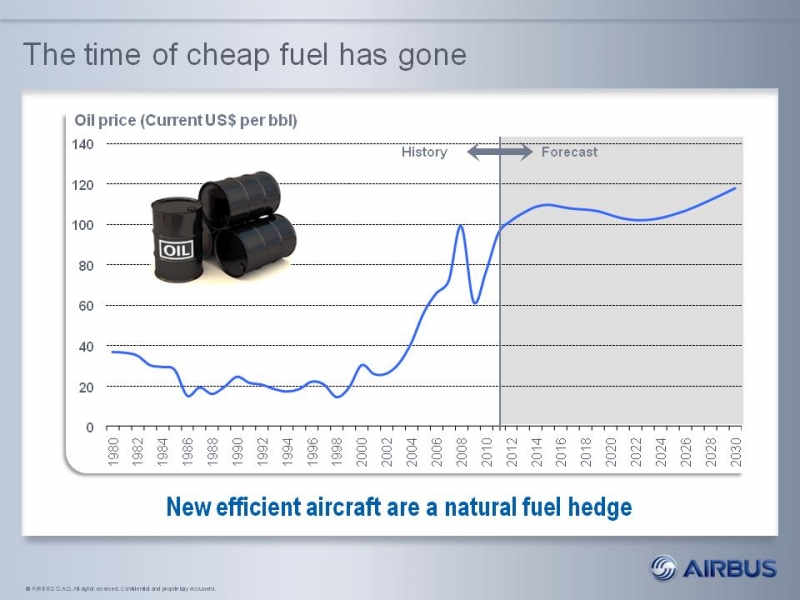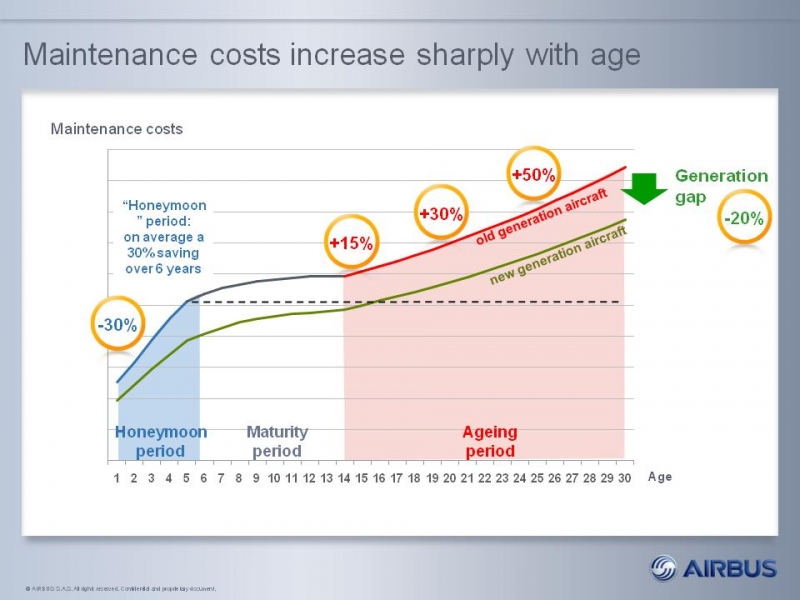

Market Trends
Old fleet vs. cost-effective new technology
What is the first thing an airline CFO does these days before starting the day? Surely checking the price of oil is high on the list! Earlier this month, this moving target rose to $110 a barrel, and that translates into $3 to $3.1 per US gallon for airlines (and even more in some countries, such as Brazil).
When operating older generation aircraft, this issue becomes even more paramount. For example, an MD80 or a 737Classic will typically burn around 30% more fuel than a new A320.
When comparing older aircraft with newer ones, there are several misconceptions. Some would claim that they pay much less for their old aircraft, and that they can continue to fly these old fleets for a long time. Some of this may be true, but let’s dig a bit deeper …
An airline may pay less for an old plane – strictly speaking, but they cost much more to operate than a newer one. And yes, you can continue to fly them, but at what price? Fuel and maintenance costs today account for nearly two-thirds of direct operating costs. Per flight hour, an A320, even second-hand, will burn less fuel than a 737-300, while carrying 26 to 32 passengers more depending on the configuration.
But reduced fuel burn is not the only benefit of new planes: they also offer significantly lower maintenance costs. Technological improvements typically bring a 20% saving, and eliminating the ageing effects adds another 30% savings (considering a 3 to 5-year old A320 vs. 15 to 20-year old 737). This usually cuts maintenance bills by half.
Finally, utilization is another critical factor. For instance, considering the same type of operations, a new generation aircraft is capable of flying around 700 to 800 hours more per year, sometimes much more. This speeds up the amortization of rental or ownership costs, while enhancing revenues. In some cases, airlines are even able to reduce their fleet size thanks to higher efficiency and utilization.
And of course, a new generation aircraft comes with all sorts of unquantifiable but real differentiators, including more range capability, greater comfort, more cabin amenities and an enhanced image.
There is today a clear case to switch to new technology, even if you pay less than $100,000 per month to rent your old planes. With fuel and maintenance costs continuing to rise, opportunities to upgrade fleets while maintaining the cost base the same, should not be missed. And with today’s improved economic environment throughout the region, the timing could not be better.
For more information, contact:
Patrick Baudis
Vice President Marketing, Airbus Latin America & Caribbean
patrick.baudis@airbus.com

Historical and forecasted oil prices
